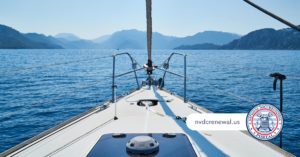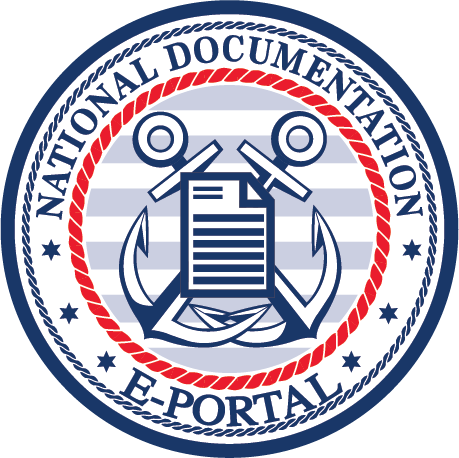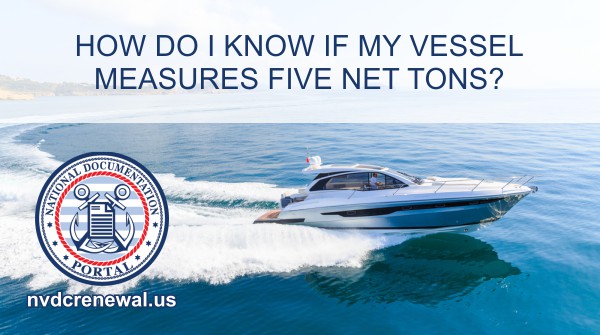To determine if your vessel measures five net tons, you don’t have to weigh it—instead, it’s about volume, not weight. “Net tons” refer to the vessel’s internal volume, with one net ton equaling 100 cubic feet. Most vessels that are at least 25 feet in length will measure five net tons or more, making them eligible to become documented vessels. If you’re unsure, we can help you verify whether your vessel meets the requirement, which is a key factor for U.S. Coast Guard documentation.

What Is a Net Ton and Why Does It Matter?
A net ton is not a unit of weight but a measure of a vessel’s internal capacity. Specifically, one net ton equals 100 cubic feet of space within the vessel’s enclosed spaces that can be used for cargo or passengers. This calculation does not include spaces like the engine room or navigation areas.
When determining whether a vessel can be registered as a documented vessel, the U.S. Coast Guard looks at its net tonnage. This is essential because the net tonnage is a prerequisite for documented status—not simply for classification purposes but also for legal, regulatory, and insurance reasons. Documentation enables certain vessels to operate in U.S. waters under specific rights and responsibilities, especially if the vessel is used for commercial purposes.
If your vessel meets the five net ton minimum, you are eligible to apply for documentation through our site using the Initial Vessel Documentation form. We guide you through every step to ensure your form is accurate and submitted properly.
How Can I Estimate My Vessel’s Net Tonnage?
While the most accurate method of determining net tonnage involves a professional marine surveyor or a formal tonnage measurement, there are basic guidelines that can help you get an idea of where your vessel stands.
If your vessel is:
- 25 feet or longer, it likely meets or exceeds five net tons.
- Specifically designed for cargo, passenger transport, or commercial work, it probably meets the requirement even if it’s under 25 feet.
That said, vessel shape, design, and interior configuration can affect the actual volume calculation. So while length can be a good indicator, it isn’t the only factor.
Still uncertain? We can help you interpret your vessel’s measurements. If necessary, we may recommend having a formal tonnage measurement completed to ensure that your application is based on accurate data.
What If I Don’t Know My Vessel’s Measurements?
Not every vessel owner has the complete specs available. If you purchased your vessel second-hand or built it yourself, you might not have exact numbers for the dimensions needed to estimate tonnage.
In that case, here’s how we can help:
- We can walk you through the information typically found in manufacturer specifications or previous registration documents.
- If you provide us with length, breadth, and depth, we can help estimate your tonnage using simplified formulas.
- We also help you determine whether your vessel needs to undergo an official measurement.
Our services are built to help you avoid delays in your documentation process. When you use our secure portal, we make sure all necessary fields are completed properly the first time.
What Happens If My Vessel Measures Under Five Net Tons?
If your vessel is under five net tons, it cannot be listed among documented vessels with the U.S. Coast Guard. However, it still needs to be registered, but through your state’s registration system rather than through the federal documented process.
State registration is typically used for smaller vessels and may not offer the same benefits as federal documentation, such as simplified movement through international waters, ownership traceability, and the ability to finance using the vessel as collateral. If your vessel is close to the threshold, it’s worth investigating further to ensure you’re choosing the right route.
Remember that documented vessels are often preferred by lenders, insurance companies, and even some marinas and port authorities. That’s why confirming your vessel’s eligibility early on is key.

Where Is the Five Net Ton Requirement Found in Federal Regulations?
The five net ton requirement for documented vessels is laid out in federal regulations, specifically in Title 46, Part 67 of the Code of Federal Regulations. These guidelines govern who may register a vessel, how documentation is handled, and what the requirements are.
While you do not need to navigate these regulations on your own, they are public and available for review. We understand how complex this part of the process can be, so we aim to simplify it for you through our platform and services.
How We Help Yours Become One of the Documented Vessels
Our site is designed to help vessel owners determine eligibility and file the correct forms. For those with vessels that qualify, we offer:
- Assistance with the Initial documentation process.
- Online access to the full suite of Coast Guard forms.
- Support when additional documentation is required (such as proof of ownership or builder’s certification).
- Renewal, reinstatement, and transfer services to help you stay compliant.
We also help correct errors and guide you through form resubmissions if needed. All of our services are available through a secure, streamlined online portal that reduces the hassle often associated with vessel documentation.
What If My Documented Vessels Are Commercial Vessels?
If your vessel is used for commercial purposes—such as fishing, charter operations, or cargo transport—documentation is often not just an option but a requirement, provided the vessel meets or exceeds five net tons.
In those cases, documentation provides legal proof of nationality, which is important for commercial operations conducted in both U.S. and international waters. It may also be necessary to comply with insurance requirements, contract terms, or financing agreements.
If you’re operating a commercial vessel, our team can help ensure you have the right documentation for your business activities. We help prevent issues that might arise during inspections or routine compliance checks.
Can I Use Documentation Instead of State Registration?
Yes, in many cases, documented vessels are not required to be registered with a state agency. Federal documentation through the U.S. Coast Guard replaces state-level registration, though state-specific rules may still apply regarding titling, local taxes, or operating restrictions.
It’s worth noting that while federal documentation eliminates the need for visible registration numbers on the hull, you are still required to mark the vessel’s name and hailing port appropriately. We offer guidance on those requirements to ensure compliance.
Get Started Making Your Documented Vessels Today
If your vessel is over 25 feet in length or you believe it may exceed five net tons, you can begin the process through our platform. Use our Initial documentation form to start registering your vessel with the U.S. Coast Guard.
We’re here to help you with:
- Determining eligibility based on size and intended use.
- Completing and submitting your documentation quickly.
- Avoiding common mistakes that lead to rejections or delays.
- Ensuring your vessel remains compliant for years to come.
Whether you’re documenting a recreational yacht or a working commercial craft, our team is ready to make the process as smooth and efficient as possible. If you need help understanding your vessel’s measurements or aren’t sure if you meet the five net ton requirement, reach out to us. We’re happy to assist at every step. Let us take care of the paperwork so you can focus on the water.

